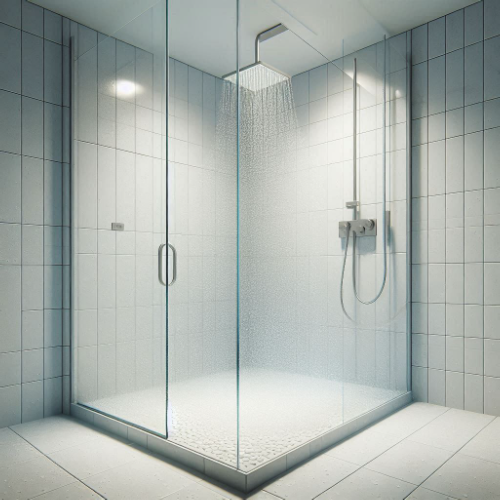Acrylic vs. Other Shower Base Materials: Why Acrylic Stands Out
Choosing the right shower base material is a crucial part of any bathroom renovation. The shower base, also known as the shower pan, is responsible for directing water toward the drain and providing a comfortable, slip-resistant surface to stand on. While there are several materials available on the market, including fiberglass, cast iron, stone, and tile, acrylic stands out as one of the most popular options for both homeowners and contractors. In this article, we’ll explore how acrylic compares to other common shower base materials and why it has become a preferred choice for many.
What is an Acrylic Shower Base?
An acrylic shower base is made from a lightweight plastic material that is molded into the desired shape of the shower floor. Acrylic is often reinforced with fiberglass to increase its durability and strength. The material is non-porous, which means it does not absorb water, making it a perfect option for bathroom environments where moisture is constantly present.
Advantages of Acrylic Shower Bases
1. Durability and Longevity
Acrylic shower bases are known for their exceptional durability. The combination of acrylic with fiberglass reinforcement makes them strong enough to withstand the daily wear and tear of frequent use without cracking or fading. While materials like fiberglass may crack or discolor over time, acrylic maintains its integrity, making it a long-lasting choice.
In comparison to fiberglass, which can become brittle over time, acrylic remains flexible and resilient. This flexibility means that acrylic is less likely to develop cracks or chips, even with heavy use. On the other hand, materials like cast iron and stone may be durable, but they can be prone to chipping and can even crack under extreme conditions or mishandling.
2. Lightweight and Easy to Install
Acrylic shower bases are significantly lighter than alternatives like cast iron, stone, or tile. This lightweight nature makes them much easier to transport and install. Cast iron, for example, can be extremely heavy and often requires reinforced flooring or professional installation to handle its weight. Acrylic, on the other hand, can often be installed by homeowners with some DIY experience, saving both time and money on labor costs.
Because acrylic is a molded material, it can also be produced in a variety of standard sizes and shapes, making it easier to find a base that fits perfectly into your shower space without the need for extensive customization. This simplicity in installation is one of the key reasons why contractors frequently recommend the best shower base for bathroom.
3. Affordability
One of the most attractive features of acrylic shower bases is their affordability. Acrylic typically costs less than materials like stone, tile, or cast iron while still offering durability and style. Tile shower bases, for example, often require not only the cost of materials but also expensive professional installation due to the need for grouting and waterproofing. Stone bases, though highly durable and aesthetically pleasing, are among the most expensive options on the market.
Acrylic strikes a balance between quality and cost, offering homeowners a reliable and cost-effective solution that still provides aesthetic appeal and functional longevity. The lower cost doesn’t mean a sacrifice in quality, as acrylic remains durable, easy to maintain, and long-lasting.
4. Low Maintenance and Easy to Clean
One of the biggest benefits of acrylic shower bases is how easy they are to clean and maintain. Acrylic’s non-porous surface resists stains, mold, and mildew, which are common problems in bathroom environments. Unlike tile shower bases, which require regular cleaning and resealing of grout lines to prevent mold and mildew buildup, acrylic shower bases only need a simple wipe-down with a mild cleaner to stay looking new.
In comparison, stone and tile shower bases require more effort to clean. Stone surfaces often need special cleaners to avoid damage, and tile bases require regular maintenance of grout lines to prevent discoloration and mold growth. Acrylic, with its smooth surface, doesn’t have the same problem with grout or surface damage, making it a more hygienic option for busy households.
5. Aesthetic Versatility
Acrylic shower bases come in a wide variety of shapes, sizes, and colors, making it easy to find a style that complements your bathroom décor. While stone and tile may offer a more luxurious or custom look, acrylic can mimic the appearance of these materials at a fraction of the cost. Many acrylic bases are available in contemporary designs that fit seamlessly into modern bathroom aesthetics, while still being customizable enough to work in traditional or transitional spaces.
Compared to fiberglass, acrylic also offers a more polished and high-end appearance. While both materials are commonly used, fiberglass tends to have a rougher texture and may show wear more quickly than acrylic, which maintains its smooth, glossy finish over time.
6. Comfort and Heat Retention
Acrylic has natural insulating properties, making it more comfortable underfoot than materials like tile or stone, which can feel cold to the touch, especially in cooler climates. This makes acrylic shower bases a more comfortable option for daily use, particularly for those who enjoy long showers. The material’s ability to retain heat also helps make the bathroom feel warmer, creating a more pleasant overall experience.
Conclusion
When comparing acrylic to other shower base materials, it’s clear why acrylic stands out as a top choice for homeowners and contractors alike. Its combination of durability, affordability, easy installation, and low maintenance makes it an ideal solution for a variety of bathroom styles and needs. Whether you’re looking for a cost-effective solution or a versatile material that offers both comfort and style, an acrylic shower base provides the perfect balance of functionality and aesthetics.






